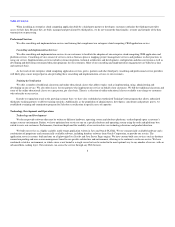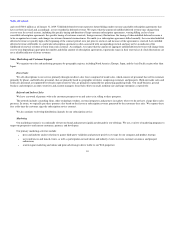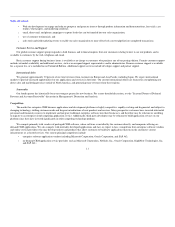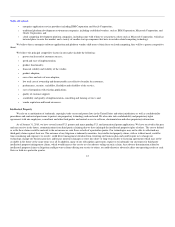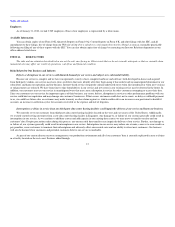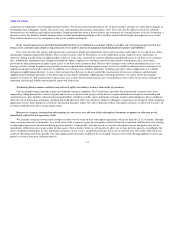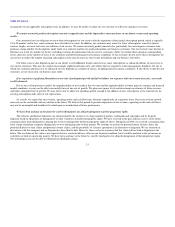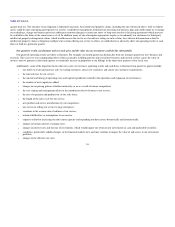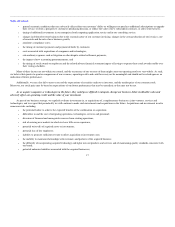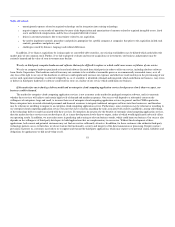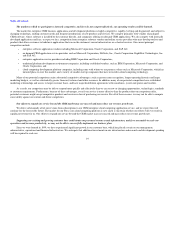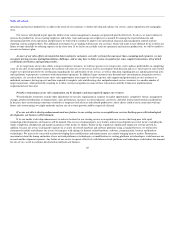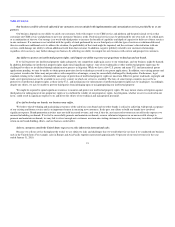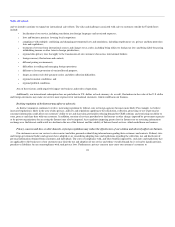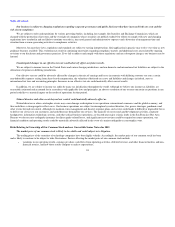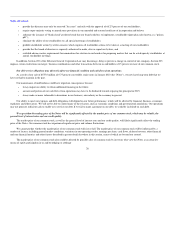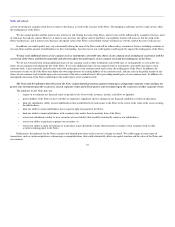Salesforce.com 2009 Annual Report Download - page 20
Download and view the complete annual report
Please find page 20 of the 2009 Salesforce.com annual report below. You can navigate through the pages in the report by either clicking on the pages listed below, or by using the keyword search tool below to find specific information within the annual report.
Table of Contents
• general economic conditions that may adversely affect either our customers' ability or willingness to purchase additional subscriptions or upgrade
their service, or delay a prospective customers' purchasing decision, or reduce the value of new subscription contracts, or affect renewal rates;
• timing of additional investments in our enterprise cloud computing application service and in our consulting service;
• changes in deferred revenue balances due to the seasonal nature of our customer invoicing, changes in the average duration of our invoices, rate
of renewals and the rate of new business growth;
• regulatory compliance costs;
• the timing of customer payments and payment defaults by customers;
• costs associated with acquisitions of companies and technologies;
• extraordinary expenses such as litigation or other dispute-related settlement payments;
• the impact of new accounting pronouncements; and
• the timing of stock awards to employees and the related adverse financial statement impact of having to expense those stock awards ratably over
their vesting schedules.
Many of these factors are not within our control, and the occurrence of one or more of them might cause our operating results to vary widely. As such,
we believe that quarter-to-quarter comparisons of our revenues, operating results and cash flows may not be meaningful and should not be relied upon as an
indication of future performance.
Additionally, we may also fail to meet or exceed the expectations of securities analysts or investors, and the market price of our common stock.
Moreover, our stock price may be based on expectations of our future performance that may be unrealistic or that may not be met.
As we acquire companies or technologies in the future, they could prove difficult to integrate, disrupt our business, dilute stockholder value and
adversely affect our operating results and the value of your investment.
As part of our business strategy, we regularly evaluate investments in, or acquisitions of, complementary businesses, joint ventures, services and
technologies, and we expect that periodically we will continue to make such investments and acquisitions in the future. Acquisitions and investments involve
numerous risks, including:
• the potential failure to achieve the expected benefits of the combination or acquisition;
• difficulties in and the cost of integrating operations, technologies, services and personnel;
• diversion of financial and managerial resources from existing operations;
• risk of entering new markets in which we have little or no experience;
• potential write-offs of acquired assets or investments;
• potential loss of key employees;
• inability to generate sufficient revenue to offset acquisition or investment costs;
• the inability to maintain relationships with customers and partners of the acquired business;
• the difficulty of incorporating acquired technology and rights into our products and services and of maintaining quality standards consistent with
our brand;
• potential unknown liabilities associated with the acquired businesses;
17



